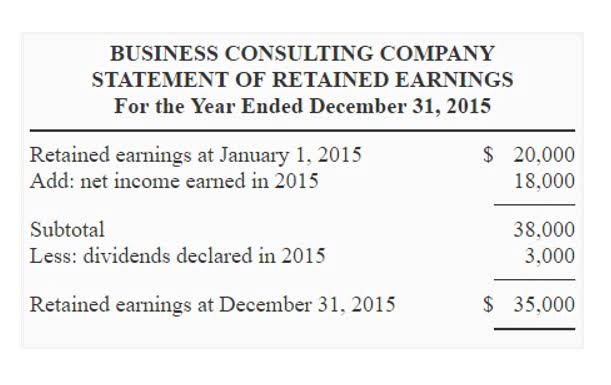
Following are the necessary journal entries to record the expense in 2019 and the repairs in 2020. The resources used in the warranty repair work could have included several options, such as parts and labor, but to keep it simple we allocated all of the expenses to repair parts inventory. Since the company’s inventory of supply parts (an asset) went down by $2,800, the reduction is reflected with a credit entry to repair parts inventory. A potential liability dependent upon some future event occurring or not occurring. If it is probable that the company will lose and the amount can be estimated, a journal entry is prepared to debit Loss from Lawsuit and to credit Lawsuit Payable. If it is possible but not probable that the company will lose, the journal entry is not made a contingent liability that is probable and for which the dollar amount can be estimated should be but instead there will be a footnote disclosure.
The Relationship Between Contingent Liabilities and Sustainability

The recognition of contingent liabilities on the financial statements (and footnotes) is to present investors, lenders, and others with reliable financial statements that contain accurate, conservative information. Since this condition does not meet the requirement of likelihood, it should not be journalized or financially represented within the financial statements. Rather, it is disclosed in the notes only with any available details, financial or otherwise. Companies operating in the United States rely on the guidelines established in the generally accepted accounting principles (GAAP). A contingent liability is defined under GAAP as any potential future loss that depends on a “triggering event” to become an actual expense. An automobile guarantee or other product warranties are examples of contingent liabilities that, are usually recorded on a company’s books.
Mitigating Financial Risks

These obligations can become actual liability if the product fails to meet the warranty conditions. It requires the company to either replace, repair or refund the failed product, depending on the stipulations of the warranty. There are sometimes significant risks that are simply not in the liability section of the balance sheet. Most recognized contingencies are those meeting the rather strict criteria of “probable” and “reasonably estimable.” One exception occurs for contingencies assumed in a business acquisition. If only one of the conditions is met, the liability must be disclosed in the footnotes section of the financial statements to abide by the full disclosure principle of accrual accounting.
Operating Income: Understanding its Significance in Business Finance
By focusing on financial planning, establishing protocols, taking insurance cover, and leveraging legal knowledge, firms can substantially reduce their financial exposure from these potential liabilities. Income tax disputes include tax assessments where the exact amount of tax payable is under discussion. In such scenarios, until a resolution is achieved, the business needs to report this as a contingent liability. If the tax assessment is higher than anticipated, it could potentially cause a significant reduction in the firm’s net income. FASB Statement of Financial Accounting Standards No. 5 requires any obscure, confusing or misleading contingent liabilities to be disclosed until the offending quality is no longer present.
- The factor of uncertainty, where the outcome is out of the company’s control for the most part, is one of the core attributes of contingent liabilities.
- As such, the fair value of contingent liabilities involves a great deal of estimation and judgement.
- Now assume that a lawsuit liability is possible but not probable and the dollar amount is estimated to be $2 million.
- On that note, a company could record a contingent liability and prepare for the worst-case scenario, only for the outcome to still be favorable.
- As part of the due diligence process, the acquiring company investigates the target company’s financial condition, including its contingent liabilities.
The determination of whether a contingency is probable is based on the judgment of auditors and management in both situations. This means a contingent situation such as a lawsuit might be accrued under IFRS but not accrued under US GAAP. Finally, how a loss contingency is measured varies between the two options as well. Under US GAAP, the low end of the range would be accrued, and the range disclosed. Warranties arise from products or services sold to customers that cover certain defects (see Figure 12.8). It is unclear if a customer will need to use a warranty, and when, but this is a possibility for each product or service sold that includes a warranty.
To Ensure One Vote Per Person, Please Include the Following Info

If the contingent liability is probable andinestimable, it is likely to occur but cannot bereasonably estimated. In this case, a note disclosure is requiredin financial statements, but a journal entry and financialrecognition should not occur until a reasonable estimate ispossible. If the contingent liability is probable and inestimable, it is likely to https://x.com/BooksTimeInc occur but cannot be reasonably estimated. In this case, a note disclosure is required in financial statements, but a journal entry and financial recognition should not occur until a reasonable estimate is possible. Contingent liabilities must pass two thresholds before they can be reported in financial statements. The liability must have more than a 50% chance of being realized if the value can be estimated.

Contingent Liabilities Accounting Treatment (U.S. GAAP)
- These come in the form of accounts payable, notes payable, mortgages payable, and other similar items.
- Contingent Liabilities must be recorded if the contingency is deemed probable and the expected loss can be reasonably estimated.
- Under the GAAP, a business should record a contingent liability in its financial records when the liability is likely and able to be estimated.
- Each business transaction is recorded using the double-entry accounting method with a credit entry to one account and a debit entry to another.
- We may earn a commission when you click on a link or make a purchase through the links on our site.
Contingent Liabilities must be recorded if the contingency is deemed probable and the expected https://www.bookstime.com/ loss can be reasonably estimated. Therefore, contingent liabilities—as implied by the name—are conditional on the occurrence of a specified outcome. The measurement requirement refers to the company’s ability to reasonably estimate the amount of loss. Even though a reasonable estimate is the company’s best guess, it should not be a frivolous number.
- These types of contingencies usually include pending litigation and guarantees of indebtedness that exist when a company guarantees the collectability of a receivable that it has discounted at the bank.
- Since this warranty expense allocation will probably be carriedon for many years, adjustments in the estimated warranty expensescan be made to reflect actual experiences.
- Past experience indicates that a certain percentage of products will be defective, and past experience can also be used to reasonably estimate the amount of the future expenditure required by the warranty.
- To simplify our example, we concentrate strictly onthe journal entries for the warranty expense recognition and theapplication of the warranty repair pool.
- Instead, Sierra Sports willinclude a note describing any details available about the lawsuit.When damages have been determined, or have been reasonablyestimated, then journalizing would be appropriate.
The Reporting Requirements of Contingent Liabilities
At the end of the year, the accounts are adjusted for the actual warranty expense incurred. The determination of whether a contingency is probable is basedon the judgment of auditors and management in both situations. Thismeans a contingent situation such as a lawsuit might be accruedunder IFRS but not accrued under US GAAP. Finally, how a losscontingency is measured varies between the two options as well. Under US GAAP, thelow end of the range would be accrued, and the range disclosed. For example, Sierra Sports has a one-year warranty on partrepairs and replacements for a soccer goal they sell.
For our purposes, assume that Sierra Sports has a line of soccer goals that sell for $800, and the company anticipates selling 500 goals this year (2019). Past experience for the goals that the company has sold is that 5% of them will need to be repaired under their three-year warranty program, and the cost of the average repair is $200. To simplify our example, we concentrate strictly on the journal entries for the warranty expense recognition and the application of the warranty repair pool. If the company sells 500 goals in 2019 and 5% need to be repaired, then 25 goals will be repaired at an average cost of $200. The average cost of $200 × 25 goals gives an anticipated future repair cost of $5,000 for 2019. Assume for the sake of our example that in 2020 Sierra Sports made repairs that cost $2,800.


